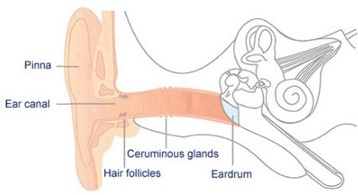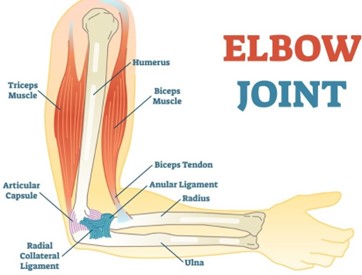Ceruminous glands secrete?
Ear wax
Keratin
Sebum
Mucus
The Correct Answer is A
Ceruminous glands are specialized sweat glands located in the skin of the ear canal. These glands secrete a waxy substance called cerumen or ear wax. Ear wax helps to lubricate and protect the skin of the ear canal and prevent the entry of foreign particles, such as dust and insects, into the ear. It also has antibacterial properties that help to protect the ear from infection. The amount and composition of ear wax vary from person to person and can be affected by factors such as age, genetics, and environmental conditions.

Nursing Test Bank
Naxlex Comprehensive Predictor Exams
Related Questions
Correct Answer is A
Explanation
A hinge joint is a type of synovial joint that allows movement in only one plane, like a door hinge. The elbow joint is made up of the humerus bone in the upper arm, the ulna bone and the radius bone in the forearm. It allows flexion and extension movements, like the opening and closing of a hinge.

Correct Answer is B
Explanation
The urethra is a tube that connects the bladder to the external environment and serves as a passageway for urine to exit the body during urination. In males, the urethra also serves as a passageway for semen to exit the body during ejaculation, making it a part of both the male reproductive system and the urinary system.

Whether you are a student looking to ace your exams or a practicing nurse seeking to enhance your expertise , our nursing education contents will empower you with the confidence and competence to make a difference in the lives of patients and become a respected leader in the healthcare field.
Visit Naxlex, invest in your future and unlock endless possibilities with our unparalleled nursing education contents today
Report Wrong Answer on the Current Question
Do you disagree with the answer? If yes, what is your expected answer? Explain.
Kindly be descriptive with the issue you are facing.
